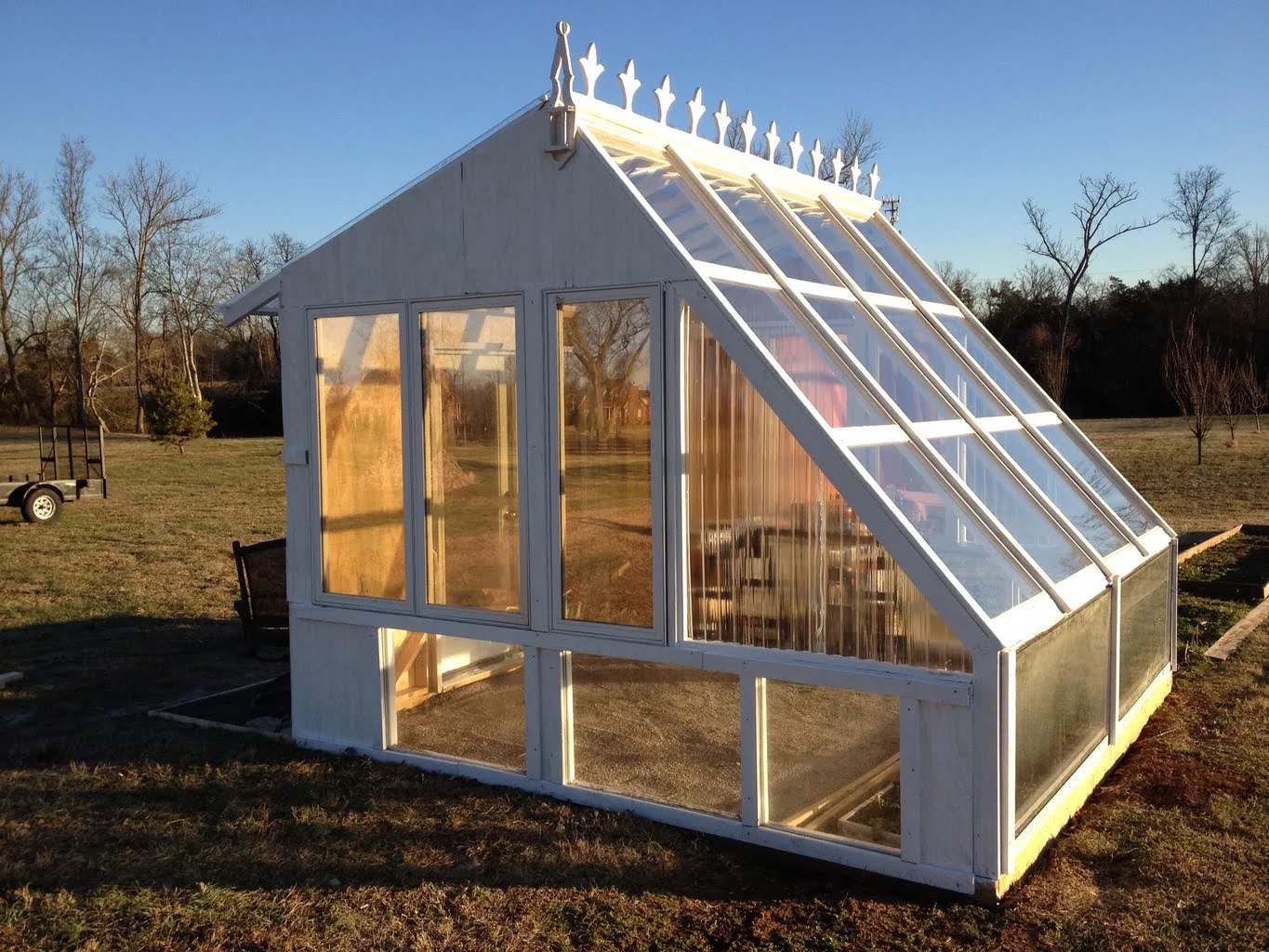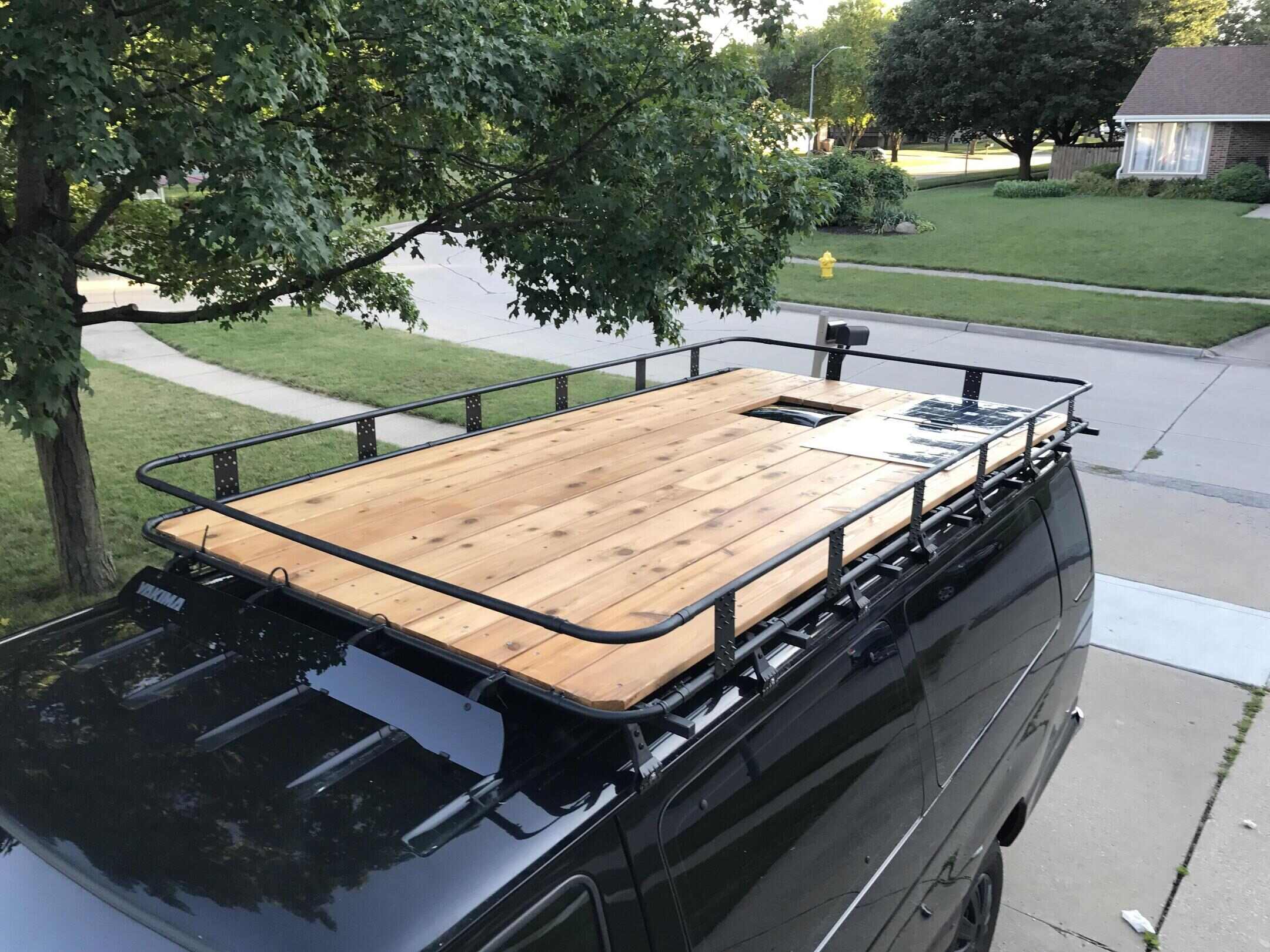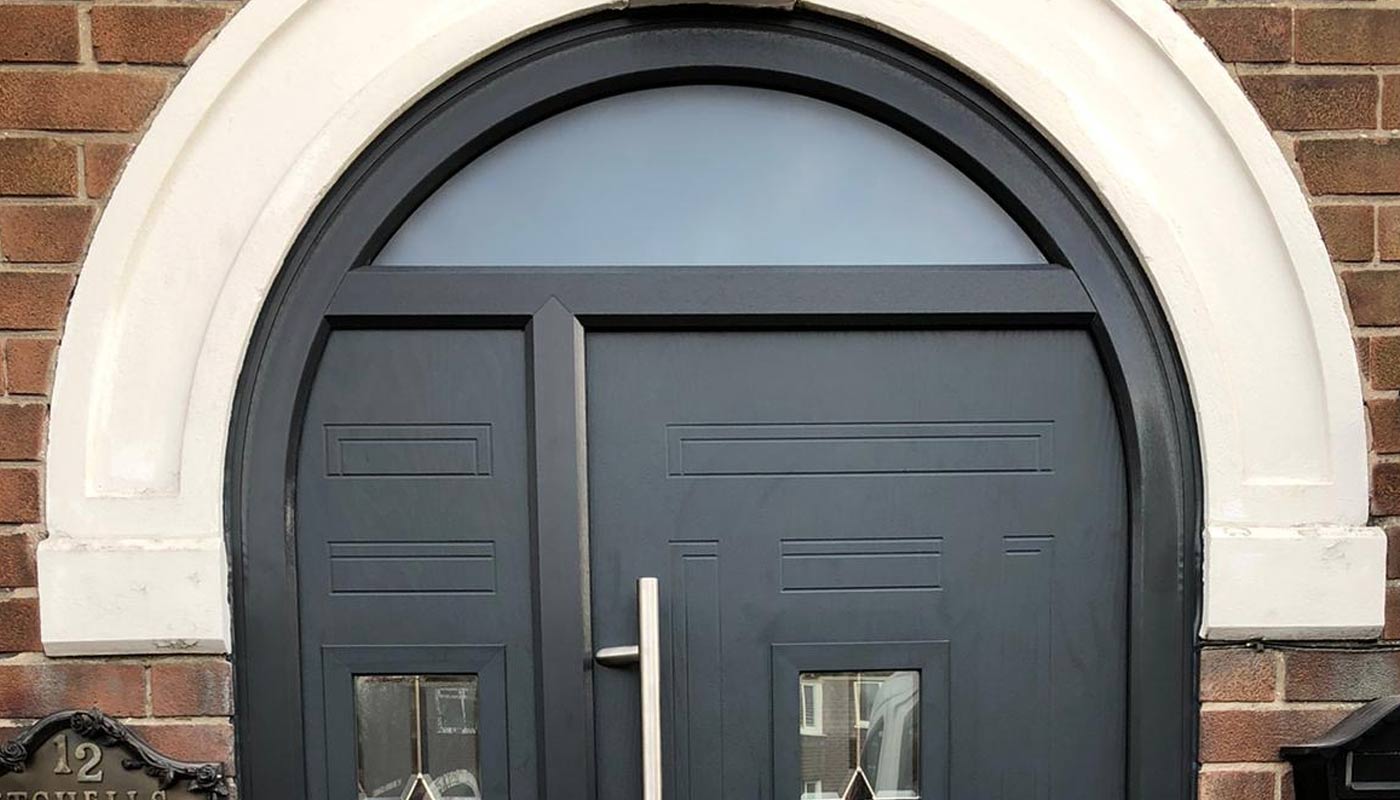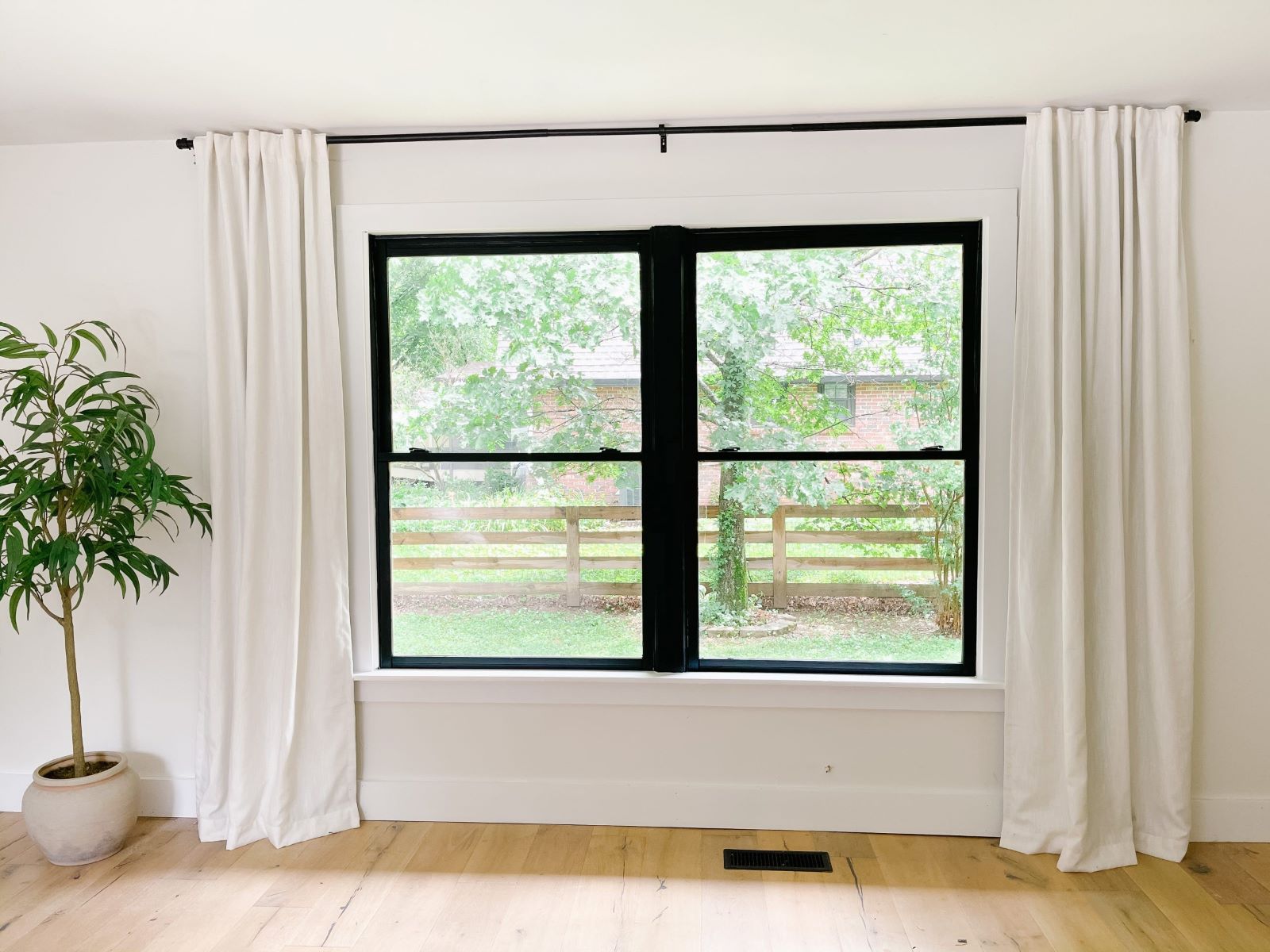Home>Create & Decorate>DIY & Crafts>Deck Building 101: How To Build A New Deck From Scratch


DIY & Crafts
Deck Building 101: How To Build A New Deck From Scratch
Published: February 27, 2024

Senior Editor in Create & Decorate, Kathryn combines traditional craftsmanship with contemporary trends. Her background in textile design and commitment to sustainable crafts inspire both content and community.
Learn how to build a new deck from scratch with our comprehensive DIY guide. Get expert tips and advice for your deck building project. Ideal for DIY & Crafts enthusiasts.
(Many of the links in this article redirect to a specific reviewed product. Your purchase of these products through affiliate links helps to generate commission for Twigandthistle.com, at no extra cost. Learn more)
Introduction
Welcome to the exciting world of deck building! Whether you're a seasoned DIY enthusiast or a newcomer to the world of construction, embarking on a project to build a new deck from scratch is a rewarding endeavor that can transform your outdoor living space. A well-crafted deck not only enhances the aesthetic appeal of your home but also provides a versatile area for relaxation, entertainment, and enjoying the great outdoors.
In this comprehensive guide, we'll walk you through the step-by-step process of building a new deck, covering everything from initial planning and design to the finishing touches and maintenance tips. By the end of this journey, you'll have the knowledge and confidence to tackle this project with enthusiasm and skill.
Building a deck is more than just a construction project; it's an opportunity to unleash your creativity and personalize your outdoor space to suit your lifestyle and preferences. Whether you envision a cozy retreat for morning coffee, a spacious entertainment area for hosting gatherings, or a tranquil oasis for unwinding after a long day, the possibilities are endless.
As we delve into the intricacies of deck building, you'll discover the satisfaction of creating a functional and visually appealing extension of your home. From selecting the right materials to mastering essential construction techniques, each phase of the process contributes to the realization of your vision.
So, roll up your sleeves, gather your tools, and get ready to embark on an enriching journey that will culminate in the creation of a stunning deck that you can proudly call your own. Let's dive into the world of deck building and unlock the potential of your outdoor space!
Step 1: Planning and Design
The first and arguably most crucial phase of building a new deck is meticulous planning and thoughtful design. This initial step sets the foundation for the entire project, shaping the functionality, aesthetics, and structural integrity of the future deck. Here's a detailed breakdown of the key considerations and actions involved in the planning and design phase:
-
Define Your Vision: Begin by envisioning the purpose and layout of your deck. Consider how you intend to use the space – whether it's for outdoor dining, relaxation, entertaining guests, or a combination of activities. Visualize the size, shape, and features that align with your lifestyle and complement your home's architecture.
-
Assess Your Property: Survey your outdoor space to identify the most suitable location for the deck. Take into account factors such as sunlight exposure, privacy, existing landscaping, and natural elements like trees or water features. Understanding the topography and layout of your yard will inform the design and orientation of the deck.
-
Set a Budget: Determine the financial resources you're willing to allocate to the project. Research the costs of materials, permits, and potential labor, and establish a realistic budget that aligns with your vision. It's essential to strike a balance between quality and affordability to ensure a successful and satisfying outcome.
-
Consider Codes and Regulations: Familiarize yourself with local building codes, zoning regulations, and permit requirements. Certain jurisdictions have specific guidelines regarding deck construction, including size limitations, setback requirements, and structural considerations. Adhering to these regulations is crucial to ensure compliance and safety.
-
Sketch a Rough Design: Translate your vision into a rough sketch or digital rendering of the deck layout. Consider elements such as the deck's shape, entry points, seating areas, and any additional features like built-in planters or pergolas. This preliminary design serves as a visual reference and a starting point for further refinement.
-
Material Selection: Research different decking materials, such as wood, composite, or PVC, and evaluate their durability, maintenance requirements, and aesthetic appeal. Consider factors like climate, maintenance preferences, and long-term sustainability when choosing the most suitable material for your deck.
-
Consultation and Collaboration: If you're uncertain about any aspect of the planning and design process, consider consulting with a professional architect, designer, or contractor. Their expertise can provide valuable insights and help refine your ideas to create a well-informed and functional design.
By investing time and attention into the planning and design phase, you lay the groundwork for a successful and gratifying deck-building experience. This preparatory stage not only clarifies your vision but also streamlines the subsequent steps, ensuring that your new deck aligns with your aspirations and seamlessly integrates with your outdoor living space.
Step 2: Obtaining Permits and Checking Regulations
Before breaking ground on your new deck project, it's essential to navigate the regulatory landscape by obtaining the necessary permits and adhering to local building codes and regulations. This critical step ensures that your deck construction complies with safety standards and legal requirements, preventing potential setbacks and ensuring a smooth progression of the project.
The process of obtaining permits and checking regulations typically involves the following key actions:
-
Research Local Requirements: Begin by researching the specific building codes, zoning ordinances, and permit requirements applicable to your location. Contact your local building department or visit their website to access the relevant information. Understanding the regulatory framework provides clarity on the parameters within which your deck design and construction must operate.
-
Identify Permit Types: Different jurisdictions may require various permits for deck construction, such as building permits, zoning permits, or environmental permits. Determine the specific permits needed for your project based on the scope, size, and location of the deck. Additionally, inquire about any special requirements for decks, such as height restrictions, setback distances, or structural specifications.
-
Submit Permit Applications: Once you've gathered the necessary information, prepare and submit permit applications to the appropriate authorities. The application process typically involves providing detailed plans, including deck dimensions, structural details, material specifications, and site plans. Be prepared to pay application fees and adhere to any documentation requirements outlined by the permitting office.
-
Engage in Code Compliance: As part of the permit application process, ensure that your deck design and construction plans align with the prescribed building codes and regulations. This may involve working with an architect or structural engineer to certify the structural integrity of the design and verify compliance with load-bearing requirements, railing specifications, and other safety considerations.
-
Obtain Approval and Permits: Upon submission of the permit applications, await the review and approval process conducted by the building department. Once your plans are reviewed and deemed compliant, you will receive the necessary permits to proceed with the construction. It's crucial to obtain these permits before initiating any work on the deck to avoid potential legal repercussions.
-
Adhere to Inspection Requirements: Throughout the construction process, schedule and undergo inspections as mandated by the building department. Inspectors will assess various stages of the construction, such as the foundation, framing, and final completion, to verify compliance with building codes and safety standards. Adhering to inspection requirements ensures that your deck meets regulatory standards and is safe for use.
By diligently navigating the process of obtaining permits and checking regulations, you demonstrate a commitment to responsible and lawful construction practices. Compliance with local requirements not only safeguards the structural integrity and safety of your deck but also fosters a positive relationship with regulatory authorities, paving the way for a successful and stress-free deck-building experience.
Step 3: Gathering Materials and Tools
The process of gathering materials and tools for building a new deck is a pivotal phase that sets the stage for the physical construction journey. Careful consideration and strategic planning in this step contribute to the efficiency, quality, and overall success of the project. Here's a comprehensive breakdown of the essential elements involved in gathering materials and tools for your deck-building endeavor.
Material Selection:
The selection of decking materials is a critical decision that significantly influences the durability, aesthetics, and maintenance requirements of your deck. Common options include pressure-treated wood, cedar, composite decking, and PVC decking. Each material offers distinct advantages in terms of cost, appearance, and longevity. Consider factors such as climate, maintenance preferences, and budget constraints when choosing the most suitable material for your deck.
Structural Components:
In addition to decking materials, you'll need to procure essential structural components such as joists, beams, and posts. These elements form the framework of the deck, providing stability and support for the decking surface. Opt for high-quality, pressure-treated lumber or engineered wood products that are designed to withstand outdoor conditions and resist decay and insect damage.
Fasteners and Hardware:
Securing the various components of your deck requires a range of fasteners and hardware, including screws, nails, brackets, and connectors. Select fasteners that are specifically designed for outdoor use and compatible with the chosen decking material. Stainless steel or coated fasteners are recommended to prevent corrosion and ensure long-term structural integrity.
Tools and Equipment:
Equipping yourself with the right tools and equipment is essential for executing the construction process with precision and efficiency. Basic tools such as a circular saw, power drill, level, tape measure, and framing square are indispensable for cutting, drilling, and assembling deck components. Additionally, specialized tools like a joist hanger nailer, decking jig, and post hole digger can streamline specific tasks and enhance the overall quality of the construction.
Safety Gear:
Prioritize safety by acquiring appropriate personal protective equipment, including safety glasses, work gloves, and hearing protection. Depending on the scope of your project, consider investing in knee pads, a hard hat, and a respirator to safeguard against potential hazards and ensure a secure and comfortable working environment.
By meticulously gathering materials and tools in preparation for the deck construction, you lay a solid foundation for a smooth and efficient building process. Attention to detail, quality, and safety at this stage sets the tone for the subsequent phases, ensuring that your deck project unfolds seamlessly and culminates in the creation of a resilient and visually stunning outdoor living space.
Read more: How to Build a DIY Garage Door
Step 4: Preparing the Site
Preparing the site for deck construction is a pivotal phase that sets the stage for the physical realization of your vision. This crucial step involves a series of meticulous actions aimed at creating a stable, level, and structurally sound foundation for the deck. By focusing on site preparation, you lay the groundwork for seamless construction and long-term durability. Here's a detailed exploration of the essential tasks involved in preparing the site for your new deck:
-
Clearing and Marking: Begin by clearing the designated area of any obstructions, including vegetation, rocks, and debris. Mark the perimeter of the deck layout using stakes and string, delineating the precise boundaries and contours of the future structure. This step provides a clear visual reference for the construction process and ensures that the deck aligns with the intended design.
-
Excavation and Grading: If the site is not already level, excavation and grading may be necessary to create a uniform and stable base for the deck. Use a shovel, rake, or mechanical equipment to remove soil and achieve the desired elevation. Pay attention to proper drainage by sloping the ground away from the house to prevent water accumulation beneath the deck.
-
Installation of Footings: Depending on the design and size of the deck, footings may be required to support the structural posts. Dig holes at designated locations and pour concrete footings to the specified depth and diameter, adhering to local building codes and engineering recommendations. Properly installed footings provide essential support and stability for the entire deck structure.
-
Laying the Foundation: With the footings in place, proceed to install the support posts and beams that form the foundational framework of the deck. Ensure that the posts are securely anchored to the footings and aligned according to the layout plan. Use a level to verify the vertical alignment and plumbness of the posts, essential for the structural integrity of the deck.
-
Underlayment and Weed Barrier: To prevent weed growth and promote air circulation beneath the deck, consider installing a suitable underlayment material, such as landscaping fabric or weed barrier. This layer acts as a protective barrier between the ground and the underside of the deck, contributing to a cleaner and more resilient outdoor environment.
-
Final Site Inspection: Before proceeding to the next phase of construction, conduct a thorough inspection of the prepared site. Verify the accuracy of measurements, the stability of the foundation, and the adherence to design specifications. Address any potential issues or discrepancies to ensure that the site is primed for the seamless continuation of the deck-building process.
By meticulously executing the site preparation phase, you establish a solid and reliable foundation for the construction of your new deck. Attention to detail, precision in execution, and adherence to best practices at this stage contribute to the overall quality, longevity, and structural integrity of the completed deck. With the site prepared, you are poised to transition to the subsequent phases of construction, bringing your vision of a stunning outdoor living space one step closer to reality.
Step 5: Building the Frame
With the site meticulously prepared, the focus shifts to the pivotal phase of building the frame, which forms the structural skeleton of the deck. This phase involves the precise assembly of joists, beams, and support elements to create a sturdy and stable framework that will serve as the foundation for the decking surface. Here's a detailed exploration of the essential tasks and considerations involved in the process of building the frame for your new deck:
-
Joist Installation: Begin by installing the joists, which are horizontal framing members that provide support for the decking boards. Position the joists perpendicular to the house, ensuring proper spacing according to the design specifications. Use joist hangers to secure the joists to the ledger board attached to the house, and employ joist hardware to connect the joists at their intersections, promoting structural integrity and load distribution.
-
Beam Placement: Next, position and secure the beams, which are horizontal load-bearing components that support the joists and distribute the weight of the deck. Depending on the design, beams may rest on top of the support posts or be attached to the sides of the posts. Ensure that the beams are level and properly aligned, and use appropriate fasteners to secure them to the support posts, maintaining consistent spacing and structural stability.
-
Post Attachment: Connect the support posts to the beams and secure them in place, ensuring a secure and stable connection. Utilize appropriate hardware and fasteners to anchor the posts to the beams, verifying that they are plumb and aligned according to the layout plan. The proper attachment of support posts is crucial for the overall stability and load-bearing capacity of the deck frame.
-
Bracing and Reinforcement: Implement diagonal bracing or additional reinforcement as needed to enhance the rigidity and stability of the frame. Diagonal bracing helps prevent lateral movement and sway, particularly in larger or elevated decks. Evaluate the structural requirements and incorporate bracing elements to fortify the frame against potential forces and ensure long-term durability.
-
Leveling and Alignment: Throughout the frame construction process, prioritize precise leveling and alignment of all components. Utilize a level and string lines to verify the horizontal and vertical orientation of the frame, correcting any discrepancies to achieve uniformity and structural integrity. Accurate leveling and alignment are essential for the seamless installation of decking boards and the overall stability of the deck structure.
By meticulously executing the process of building the frame, you establish a robust and reliable foundation for the decking surface, setting the stage for the visual transformation of your outdoor space. Attention to detail, precision in assembly, and adherence to structural best practices at this stage contribute to the overall quality, longevity, and load-bearing capacity of the completed deck frame. With the frame in place, you are poised to transition to the subsequent phases of construction, bringing your vision of a stunning and functional outdoor living space one step closer to reality.
Step 6: Installing Decking Boards
The installation of decking boards marks a significant milestone in the construction of a new deck, as it transforms the structural framework into a functional and visually captivating outdoor living space. This phase involves the meticulous placement and fastening of decking materials to create a durable, aesthetically pleasing surface that will serve as the foundation for various outdoor activities. Here's a detailed exploration of the essential tasks and considerations involved in the process of installing decking boards for your new deck:
-
Material Preparation: Prior to installation, carefully inspect the decking boards to ensure they are free from defects, warping, or damage. Sort the boards based on their condition and select the highest quality pieces for highly visible areas. Additionally, acclimate the decking boards to the outdoor environment to minimize potential expansion or contraction after installation.
-
Orientation and Layout: Begin by determining the orientation and layout of the decking boards, considering factors such as grain direction, visual appeal, and efficient material utilization. Depending on the desired aesthetic, you may opt for a parallel or diagonal orientation of the boards, aligning them with the architectural features of the house or the natural flow of the outdoor space.
-
Spacing and Fastening: Maintain consistent spacing between the decking boards to facilitate proper drainage, airflow, and expansion and contraction allowances. Utilize specialized spacers or tools to achieve uniform gaps between the boards, promoting a visually appealing and structurally sound deck surface. Secure the boards in place using appropriate fasteners, such as screws or hidden clips, to ensure a secure and stable attachment while minimizing visible hardware.
-
Cutting and Trimming: As the installation progresses, anticipate the need for cutting and trimming the decking boards to fit the specific dimensions and contours of the deck. Use a circular saw or specialized cutting tools to achieve precise and clean cuts, ensuring a seamless integration of the boards and a polished overall appearance. Pay attention to detail when addressing corners, edges, and intricate areas to maintain a professional finish.
-
End and Edge Detailing: Address the end and edge detailing of the decking boards to enhance the visual appeal and longevity of the deck surface. Consider utilizing fascia boards or trim to conceal the exposed ends of the decking boards, creating a refined and finished look while providing protection against moisture and environmental elements. Additionally, round off sharp edges and corners to promote safety and aesthetic continuity.
-
Quality Control and Finishing Touches: Throughout the installation process, conduct regular quality checks to ensure that the decking boards are aligned, level, and securely fastened. Address any discrepancies or imperfections promptly to maintain a high standard of craftsmanship. Upon completing the installation, perform a thorough inspection and make any necessary adjustments to achieve a flawless and inviting deck surface.
By meticulously executing the process of installing decking boards, you elevate the structural framework into a functional and visually captivating outdoor living space. Attention to detail, precision in placement, and adherence to best practices at this stage contribute to the overall quality, longevity, and aesthetic appeal of the completed deck surface. With the decking boards securely in place, you are one step closer to realizing your vision of a stunning and inviting outdoor retreat.
Step 7: Adding Railings and Stairs
The addition of railings and stairs represents a pivotal phase in the construction of a new deck, as it not only enhances the safety and functionality of the outdoor space but also contributes to its aesthetic appeal. This phase involves the meticulous installation of railings to provide security and visual delineation, as well as the construction of stairs to facilitate seamless access to the deck. Here's a detailed exploration of the essential tasks and considerations involved in adding railings and stairs to your new deck:
Read more: DIY Bathroom Wall Organizer Ideas
Railing Installation:
-
Design Considerations: Begin by selecting a railing design that complements the overall aesthetic of the deck while aligning with safety standards. Consider options such as wood, metal, glass, or composite railings, evaluating their durability, maintenance requirements, and visual impact. Ensure that the chosen railing design harmonizes with the architectural style of the house and the surrounding landscape.
-
Code Compliance: Familiarize yourself with local building codes and regulations pertaining to railing height, spacing, and load-bearing capacity. Adhere to the prescribed guidelines to ensure that the installed railings meet safety standards and provide adequate protection for deck occupants.
-
Precise Installation: Install the railing posts securely, ensuring proper anchoring and alignment. Utilize appropriate hardware and fasteners to attach the railing posts to the deck frame, verifying their stability and structural integrity. Pay attention to consistent spacing and level installation to achieve a polished and professional finish.
-
Baluster Placement: Position and secure the balusters or infill elements between the railing posts, maintaining uniform spacing and alignment. Depending on the design, balusters may be installed vertically, horizontally, or in custom patterns, contributing to the visual appeal and safety of the railing system. Ensure that the baluster installation complies with code requirements and enhances the overall aesthetics of the deck.
-
Handrail Assembly: Construct and install the handrails, providing a secure and comfortable grip for individuals using the stairs or traversing the deck perimeter. Ensure that the handrails are ergonomically positioned and securely attached to the railing posts, promoting safety and accessibility for deck occupants of all ages.
Stair Construction:
-
Design and Dimensioning: Plan the layout and dimensions of the stairs to facilitate safe and convenient access to the deck. Consider factors such as rise, run, tread width, and landing space, adhering to building code requirements and ergonomic principles. Design the stairs to seamlessly integrate with the overall deck design and enhance the visual continuity of the outdoor space.
-
Stringer Installation: Construct and install the stair stringers, ensuring precise alignment and structural stability. Utilize durable and weather-resistant materials for the stringers, accounting for the anticipated load and foot traffic. Secure the stringers to the deck frame and verify their level orientation to ensure a secure and stable foundation for the stairs.
-
Tread and Riser Installation: Install the stair treads and risers, ensuring consistent spacing and secure attachment. Utilize high-quality materials that offer slip resistance and durability, promoting safety and longevity. Verify the levelness and alignment of each tread and riser to create a uniform and visually appealing staircase.
-
Handrail Integration: Integrate handrails into the stair design, providing essential support and guidance for individuals using the stairs. Ensure that the handrails are securely attached to the stair structure and comply with code requirements for height and grip circumference. The handrails should facilitate safe and comfortable navigation of the stairs, enhancing the overall usability of the deck.
By meticulously executing the process of adding railings and stairs, you elevate the safety, functionality, and visual appeal of the deck, creating a welcoming and secure outdoor environment. Attention to detail, precision in installation, and adherence to safety standards at this stage contribute to the overall quality and usability of the completed deck. With the railings and stairs seamlessly integrated, your vision of a stunning and accessible outdoor retreat is one step closer to realization.
Step 8: Finishing Touches and Maintenance Tips
As the construction of your new deck nears completion, attention turns to the crucial phase of adding finishing touches and implementing maintenance strategies to ensure the longevity and visual appeal of the outdoor living space. This phase encompasses a range of tasks aimed at enhancing the aesthetics, functionality, and durability of the deck, as well as establishing proactive measures for ongoing maintenance. Here's a detailed exploration of the essential considerations and actions involved in the process of applying finishing touches and implementing maintenance tips for your new deck:
Aesthetic Enhancements:
-
Staining or Sealing: Consider applying a protective stain or sealant to the decking surface to enhance its resistance to moisture, UV exposure, and wear. Choose a product that complements the natural beauty of the wood or enhances the color of composite decking, promoting a vibrant and polished appearance while safeguarding the material from environmental elements.
-
Decorative Elements: Personalize the deck with decorative elements such as outdoor lighting, planters, and furniture that reflect your style and enhance the functionality of the space. Incorporate lighting fixtures for ambiance and safety, strategically position planters to introduce greenery, and select durable and comfortable furniture to create inviting seating and dining areas.
Read more: How to Build a DIY Camper Roof
Safety Measures:
-
Railing Accessories: Consider installing additional railing accessories such as post caps, lighting, or decorative balusters to elevate the visual appeal and safety of the railing system. These enhancements not only contribute to the aesthetic charm of the deck but also provide supplementary lighting and security features for evening enjoyment.
-
Slip-Resistant Surfaces: Address potential slip hazards by incorporating slip-resistant additives or mats on the deck surface, particularly in areas prone to moisture accumulation. This proactive measure promotes safety and minimizes the risk of slips and falls, especially during inclement weather or high foot traffic.
Maintenance Strategies:
-
Regular Cleaning: Establish a routine for regular cleaning and maintenance of the deck, including sweeping debris, removing organic matter, and washing the surface with a mild detergent. Periodic cleaning prevents the accumulation of dirt, mold, and stains, preserving the visual appeal and structural integrity of the deck.
-
Inspection and Repairs: Conduct periodic inspections to identify and address any signs of wear, damage, or structural issues. Check for loose fasteners, rotting wood, or signs of insect infestation, and promptly address any concerns to prevent further deterioration and maintain the safety and longevity of the deck.
-
Seasonal Care: Adapt maintenance practices to seasonal changes, such as applying fresh sealant in the spring, clearing snow and ice in the winter, and addressing foliage and debris in the fall. Tailoring maintenance efforts to seasonal demands ensures that the deck remains resilient and visually appealing throughout the year.
By meticulously attending to finishing touches and implementing proactive maintenance strategies, you elevate the visual appeal, safety, and longevity of your new deck, creating an inviting and enduring outdoor retreat. Attention to detail, proactive maintenance, and a commitment to preserving the deck's integrity contribute to the overall quality and enjoyment of the completed outdoor living space. With the finishing touches applied and maintenance strategies in place, your vision of a stunning and enduring outdoor sanctuary is fully realized.
Conclusion
As we conclude this comprehensive guide to building a new deck from scratch, it's essential to reflect on the transformative journey that has unfolded. From the initial stages of envisioning your ideal outdoor space to the meticulous planning, construction, and finishing touches, the process of deck building is a testament to creativity, craftsmanship, and the pursuit of a personalized sanctuary.
Throughout this endeavor, you've embarked on a fulfilling exploration of design principles, structural integrity, and the seamless integration of functionality and aesthetics. The careful consideration of materials, adherence to regulatory requirements, and the execution of precise construction techniques have culminated in the creation of a stunning and versatile outdoor living space.
The completion of a new deck represents more than the assembly of wood, fasteners, and railing systems; it signifies the realization of a vision, the embodiment of comfort and hospitality, and the extension of your home into the natural world. Your new deck is a canvas for cherished memories, a stage for laughter and relaxation, and a testament to your dedication to enhancing your living environment.
As you step onto the finished deck, you are greeted by the tangible evidence of your efforts – a space that beckons you to savor the beauty of the outdoors, connect with loved ones, and find solace in the tranquility of your surroundings. Whether it's the warmth of the morning sun, the conviviality of a gathering, or the quiet contemplation of an evening breeze, your new deck stands ready to accommodate and enrich your experiences.
Looking ahead, the maintenance and care of your deck will be an ongoing commitment, ensuring that its allure and functionality endure through the seasons. Embracing the rhythm of seasonal care, regular inspections, and the infusion of personal touches will sustain the vibrancy and longevity of your outdoor retreat, allowing it to evolve alongside your lifestyle and preferences.
As you embark on this next phase of enjoyment and stewardship, remember that your deck is more than a structure; it's a reflection of your aspirations, a conduit for joy, and a testament to the art of creating a harmonious connection between indoor comfort and outdoor splendor.
With the completion of your new deck, you've not only expanded your living space but also enriched your life with the boundless possibilities of outdoor living. May your deck be a source of joy, relaxation, and inspiration, inviting you to embrace the beauty of nature and the comfort of home for years to come.












